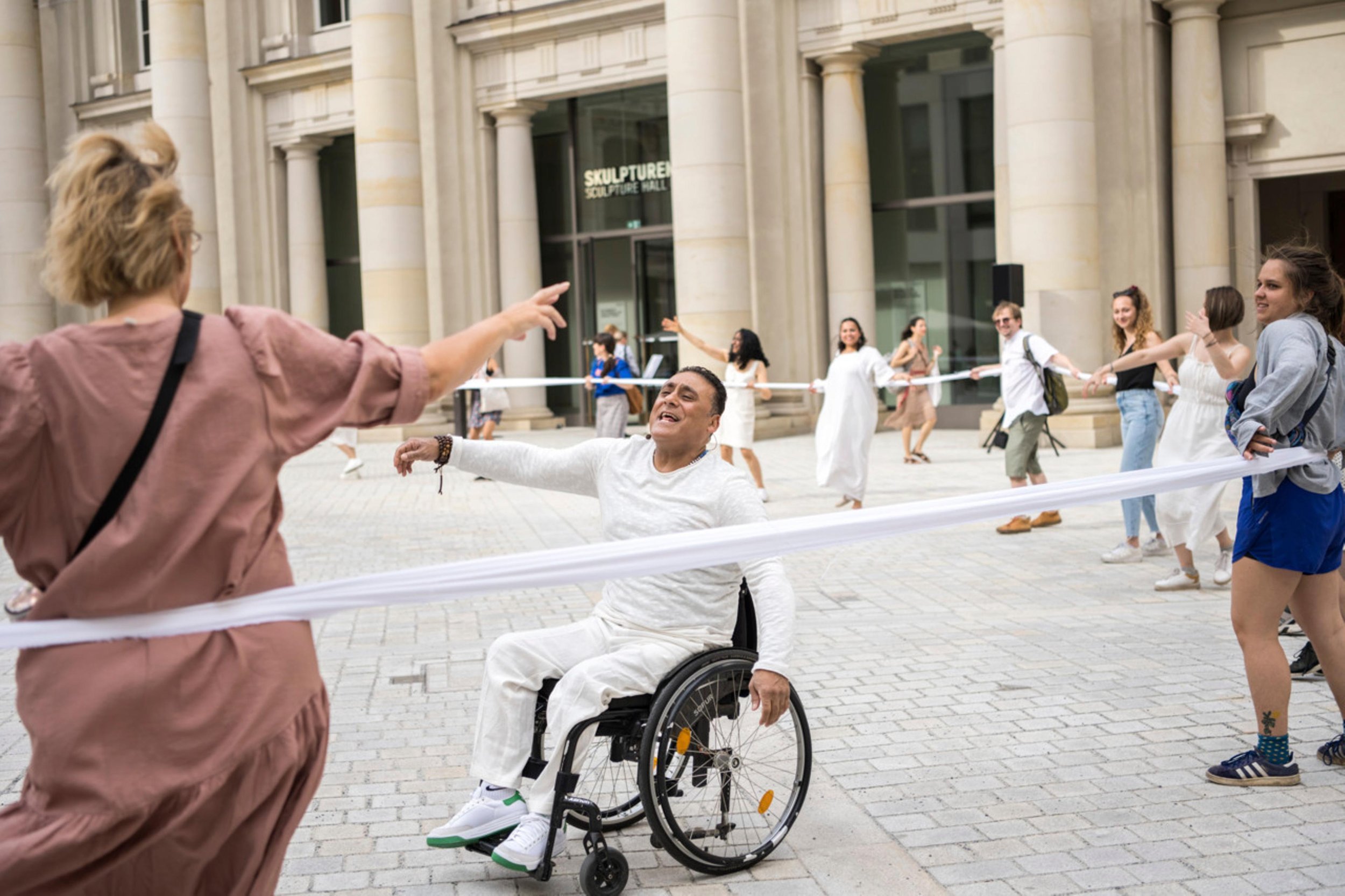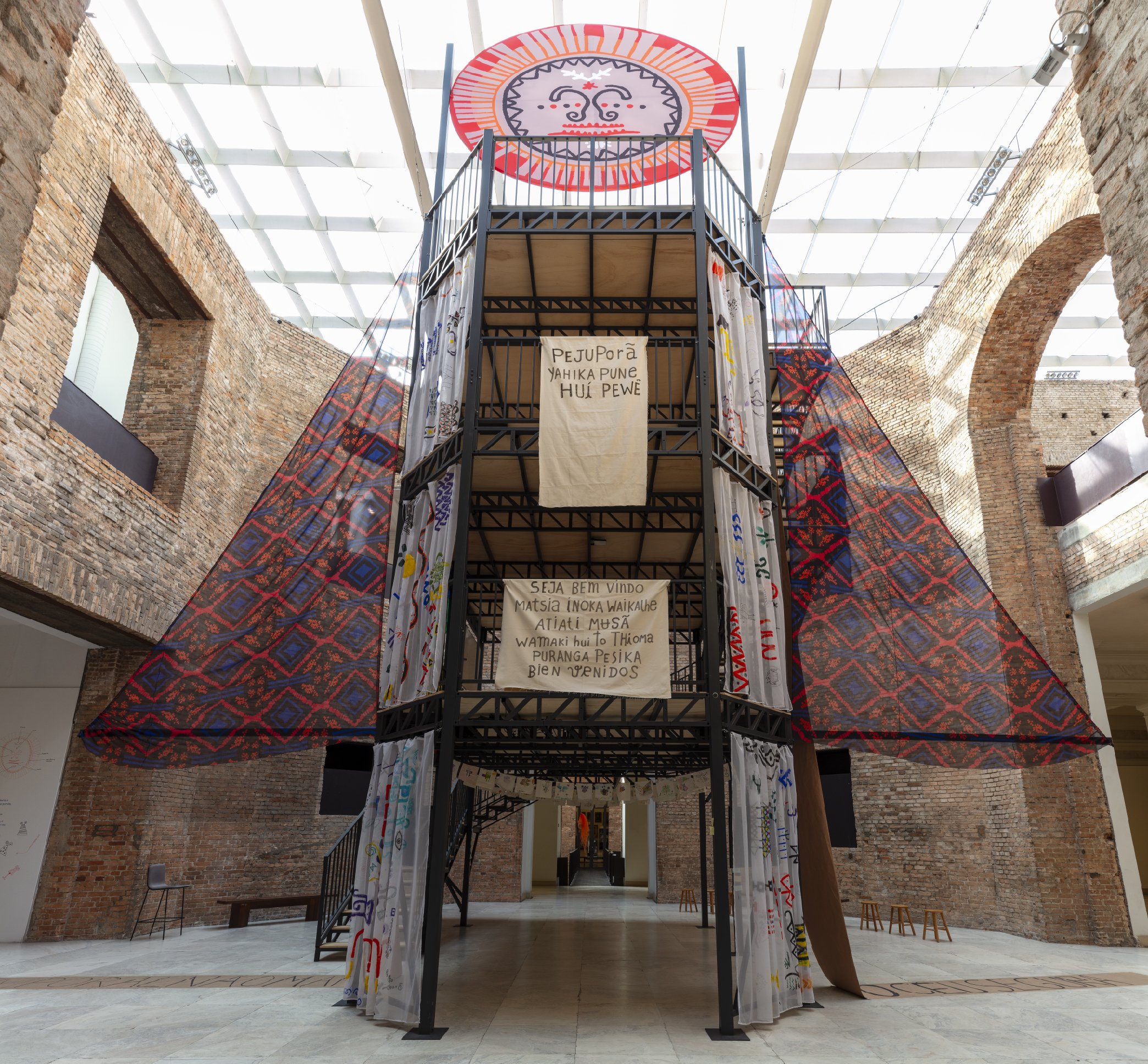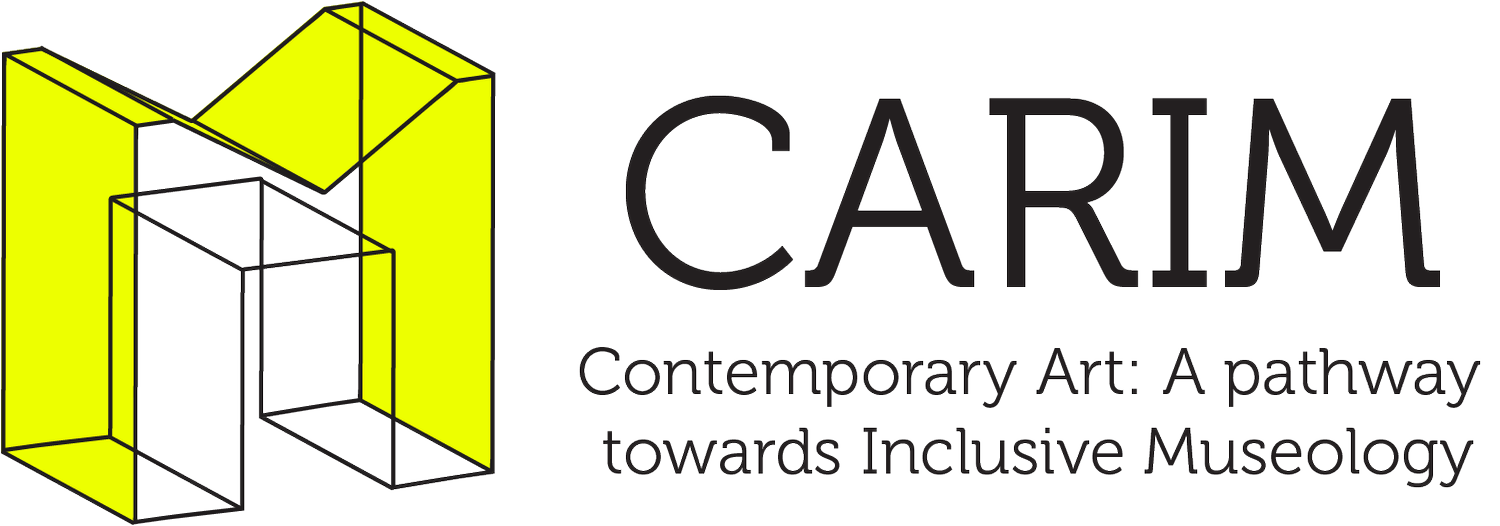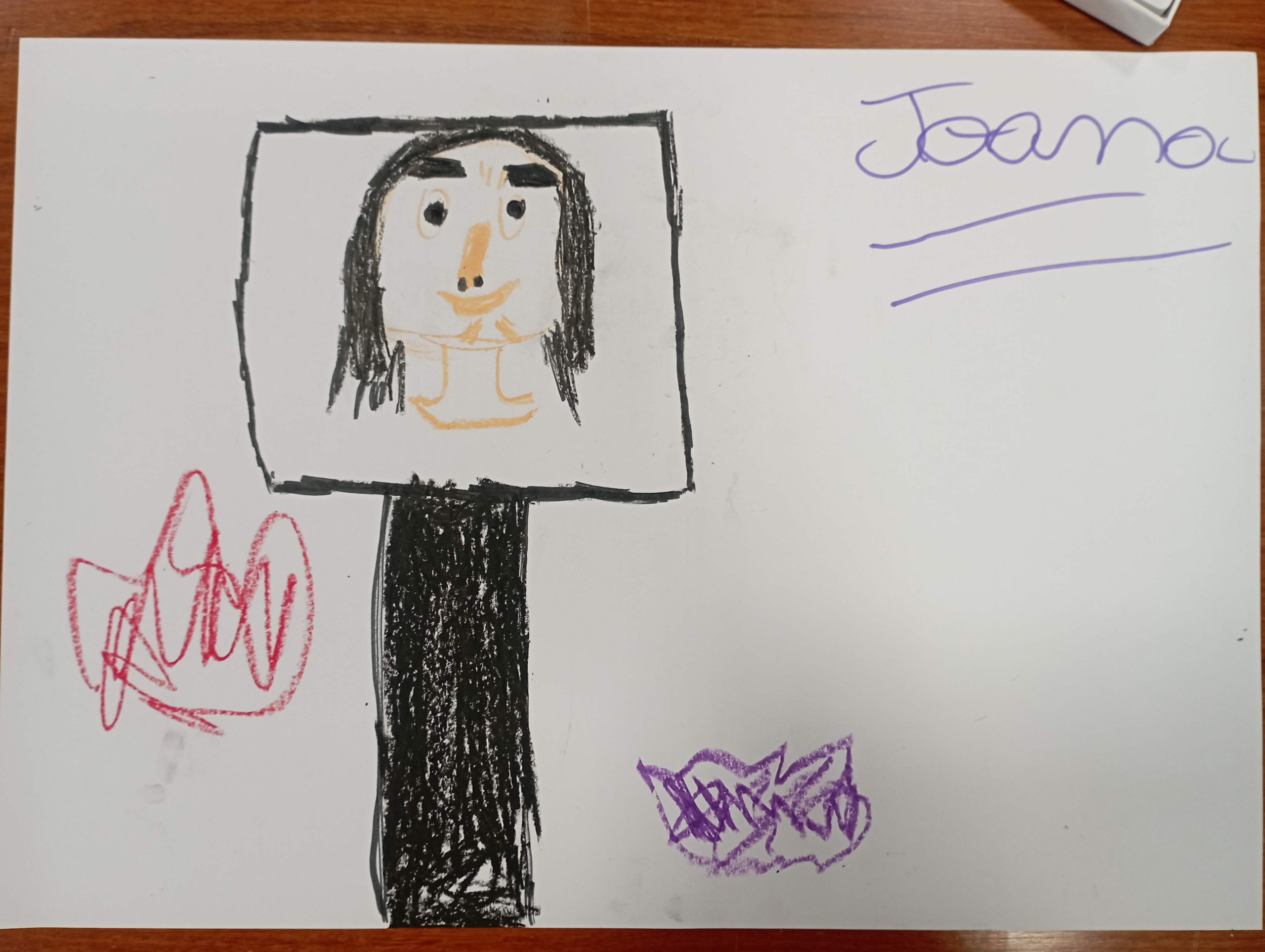
INTERVENTIONS IN MUSEUMS
SCREENING OF GUSTAVO CABOCO: KANAU’KYBA (2023), VIDEO ANIMATION, 11 MIN. ACTIVITY WITH PASSOS MANUEL SCHOOL CHILDREN (8 years-old) AT THE GEOLOGY MUSEUM OF LISBON.
Dates: 8th November 2023 - 8th January 2024
Venue: Geology Museum of Lisbon
R. Academia das Ciências 19 2°, 1200-032 Lisboa
Web : https://www.lneg.pt/museugeologico/
On November 8, 2023 an educational action was organized with a group of 8-year-old children at the Geological Museum of Lisbon, as part of CARIM research project. The action represents an attempt to elaborate together with children an extended vision of how museum can transmit, store and mediate cultural information, objects and immaterial heritage, steping out of an euro-centric tradition of viewing the non-human world.
The action was conducted by the psychologist and museology researcher Roberta Gonçalves, andby Margarida Belchior, professor in education and sociodrama, both based at Universidade Lusofona, Lisbon. Central to the educational action was the projection of the artistic work of the Brazilian contemporary artist Gustavo Caboco of Wapichana ancestry, namely the digital animation:Kanau’Kyba (2023).
The film describes a vision of the mineral and natural and the osmosis between human and non-human dimensions of perception, through the perspective of indigenous knowledge, traditions and cosmogonies. The inter-disciplinary methodology included, in addition to the projection of animation by artist Gustavo Caboco, a collective immersion in a story recorded by Gustavo Caboco himself (with a soundpanel of voice and sound), led by psychologist Roberta Gonçalves (Univ. Lusofona, Department of Museology), followed by the application of an active experimental learning methodology based on sociodrama (led by professor Margarida Belchior (Univ. Lusofona, Ceied).
Children and adults alike physically enacted different hypostasthes of being in the world and collectively rethought concepts such as the museum, stone, the earth and our relation to it – based on the inputs brought by the video-animation by Gustavo Caboco, by sociodrama and immersion. At the same time, the way in which museums hold and transmit natural history, was not only reflected upon, but also extended with a dimension of knowledge and information that repositions our relationship with the animal, spiritual, ancestral, vegetal and mineral world.
Background Image: Partizipative Tanz Performance “Reinventing Memories”
in Rahmen von Moving the Forum Cluster 4 “Interacting”. Photographer: Stefanie Loos.
Image and Video Credits: Roberta Gonçalves e Marta Jecu

VINCENT CHEVILLON: FROM THE SHADOWS: 3 INQUIRIES IN MUSEUM COLLECTIONS
In the framework of the FCT Project CARIM. Contemporary Art: A pathway towards Inclusive Museology (P.I. Marta Jecu) [FCT 2022.04615.PTDC,DOI10.54499/2022.04615.PTDC], the French artist Vincent Chevillon, professor at the Haute Ecole des Arts du Rhin (HEAR) in Strasbourg was invited for a performative lecture at the National Museum of Contemporary Art in Lisbon (MNAC). The artist made a visual incursion into his site Archipels.org – an innovatory platform for colleting visual and factual information, which received various international prizes – that operates with methodologies from cultural anthropology and iconology. He has also presented other projects and publications in which he worked with material culture collections and archives, for example 'SEALANDS' at Espace Khiasma, Paris (2016), 'Et In Arcadia' at Mucem, Marseille, 2019 and the exhibition "Time lapses us" at Collège des Bernardins, Paris (2021) and the associated publication : Vincent Chevillon, Lisières, Pétrole Éditions
2021 .
BIO VINCENT CHEVILLON
Initially trained in Earth Sciences, Vincent Chevillon grew up in Martinique. He completed his training with studies in Art and in 2010 joined the post-diploma of Fine Arts in Paris, La Seine. Since 2014, he has taught Space and Volume at La Haute Ecole des Arts du Rhin (HEAR) in Strasbourg. This research brings together different fields of study ranging from anthropology, geophysics to iconology.He develops generally evolving devices from collected or shaped elements, images, stories which are formalized in the form of installations, editions, digital works, objects, sculptures. A first set of this research (Spermwhaler’s dream) was exhibited in 2011 in a module of the Pierre Bergé - Yves Saint Laurent Foundation at the Palais de Tokyo. In 2013, he undertook a field study aboard a sailboat, traveling for 7 months at sea on both sides of the Atlantic Ocean. This investigation, SEMES, will receive support from the FNAGP and the DRAC Alsace and will be exhibited in spring 2016 at the Espace Khiasma. Since 2013, he has been developing a participatory encyclopedic platform called archipels.org with different structures (FNAGP, SCAM, Espace Khiasma, Dicream, Medialab SciencePO Paris). In 2013-2014, he embarked on a journey aboard a sailboat that would retrace the route of the slave trade through an itinerary at sea on both sides of the Atlantic Ocean. His work has been exhibited internationally and is to be found in public and private collections.
Background Image: 'Escola Panapaná' from Denilson Baniwa at Pinacoteca de São Paulo in 2023. Credits: Isabella Matheus – Reproduction Pinacoteca de São Paulo

CONFERENCE IN THE MUSEU DO ALJUBE, IN LISBON
Raphaël Grisey
Nasceu em 1979 e vive em Berlim. Grisey utiliza trabalhos cinematográficos, editoriais e fotográficos para abordar políticas de memória, arquitetura, migração e agricultura. Desde 2006, Grisey trabalhou em conjunto com o fotógrafo, ativista e agricultor franco-maliano Bouba Touré (1948-2022) em projectos de colaboração com o nome atual de Sowing Somankidi Coura, a Generative Archive. Este projeto deu origem a vários workshops, exposições, filmes, por exemplo, com o grupo de teatro Kaddu Yaraax em 2017-2019, bem como a publicações e textos, como Sowing Somankidi Coura, a Generative Archive (2017, Archives Book). Os seus trabalhos foram exibidos em vários locais internacionais, centros de arte e festivais. A sua mais recente longa-metragem documental experimental Xaraasi Xanne (Crossing Voices) de 2022, tem circulado em festivais internacionais de cinema da Europa, África, América do Sul e Sudeste Asiático, em exposições e redes activistas de ecologias decoloniais até hoje. www.raphaelgrisey.net
Sowing Somankidi Coura, um Arquivo Generativo
Sowing Somankidi Coura é um esforço de investigação a longo prazo e uma colaboração entre Raphaël Grisey e Bouba Touré em torno das permaculturas e arquivos de Somankidi Coura, uma cooperativa auto-organizada ao longo do rio Senegal fundada por um grupo de antigos trabalhadores migrantes africanos e activistas em França em 1977, após a seca do Sahel de 1973. Sowing Somankidi Coura desdobra e gera cine-geografias que revelam as fronteiras entre a tradição radical das lutas dos trabalhadores migrantes em França, a história pan-africana da cooperativa e as potencialidades das agro-ecologias descoloniais. Através de uma prática cinematográfica, de arquivo, de publicação, de workshop e de teatro, o projeto envolve-se na articulação de narrativas de libertação, de cuidados colectivos e de alianças camponesas. O objetivo do projeto é a desnaturalização e descolonização das políticas migratórias e de desenvolvimento. Ao contar a história de uma geração de trabalhadores migrantes activistas na Europa logo após a independência, apresenta uma historiografia e produções culturais resistentes às narrativas nacionais que contradizem a ideia do migrante como sujeito passivo da história, invertendo as relações norte-sul. www.semersomankidicoura.net
Background Image: 'Escola Panapaná' from Denilson Baniwa at Pinacoteca de São Paulo in 2023.
Credits: Isabella Matheus – Reproduction Pinacoteca de São Paulo














